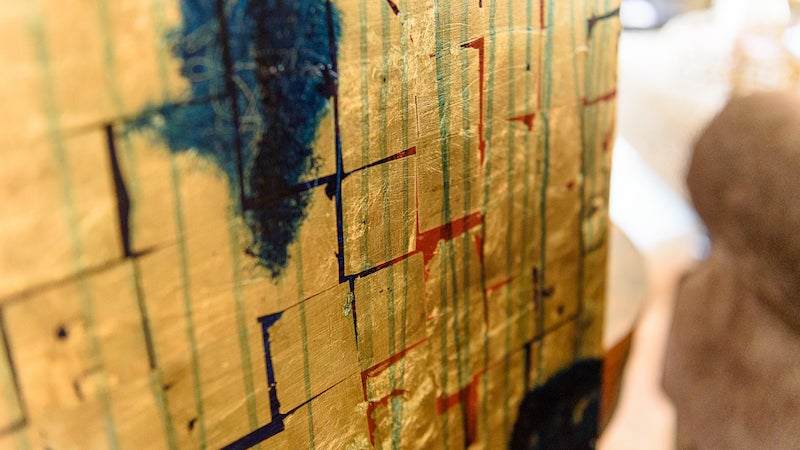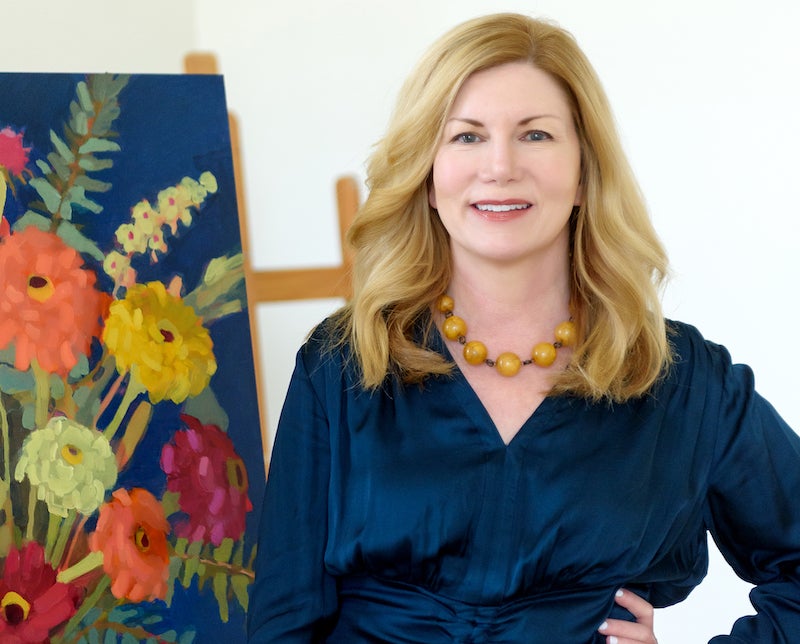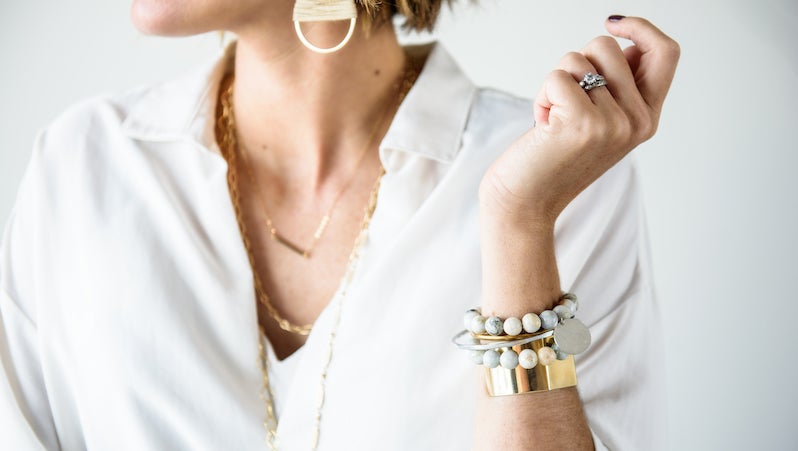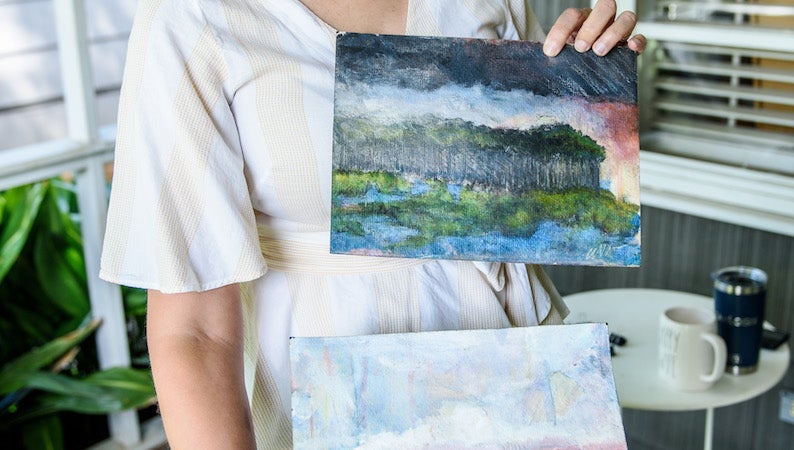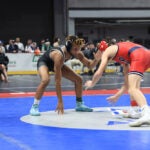By Elizabeth Sturgeon
Photos by Lindsey Culver
Donna Firnberg thinks and feels in Prussian blue. It’s deep and dark, perhaps a reminder of star-dotted skies, satin dresses or distant memories. For Donna, it’s resemblant of the ups and downs—or more accurately the downs, then the ups.
“Hope and renewal is a theme. Even though we walk through hard things, there’s always hope that things will get better,” she says. “It’s part of the human experience.”
Hope is reflected in how Donna names her abstract and expressive paintings: restoration, forgiven, refuge. A beautiful concept deserving of a beautiful representation, one that she often surrounds with fluid strokes and adorns in gold.
About four years ago, this Hall-Kent kindergarten teacher began her body of painted work just for herself, and it has now bloomed into a business. She had always been creative—doodling in her notebooks to stay focused, or painting puns on the high school football game butcher paper —but she got back into painting at her friend’s house for a Sips N Strokes night.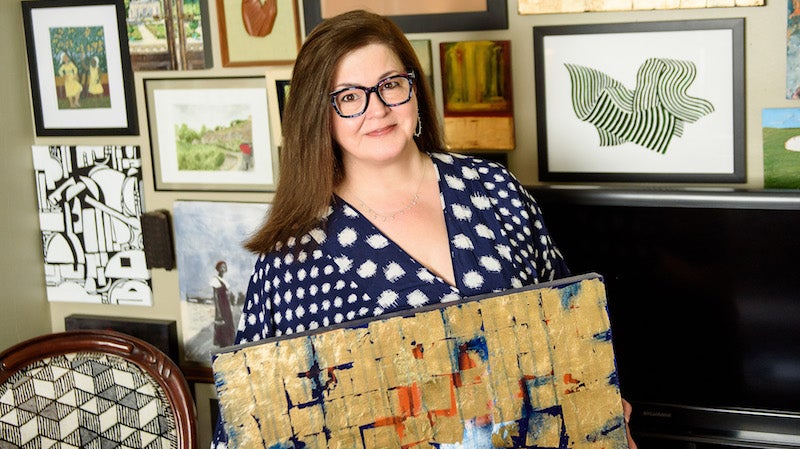
The women around her painted flowers, beaches, and light, airy nature. Donna took a different, more challenging and personal approach. “I painted fear,” she says. “And I had a blast painting fear. I’ve always loved art, but I didn’t realize the power of painting on larger canvases.”
From there she immediately bought supplies and kept painting. With each new stroke, or new color, she began to embody the Picasso quote that still sticks in her mind: “Painting is just another way of keeping a diary.” Her emotions—no matter how painful or difficult—could develop something that inspires more beauty.
The majority of Donna’s work is abstract, and much of it wears a Gustav Klimt-esque glory—gold and geometric. She often adds squares of real gold leaf in most of her pieces, which stand out against solid or dripping blues or other vibrant colors. Here, she plays with movement between shapes and the texture of layering.
The rest of her work divides into Donna’s other signatures: Southern cotton fields, slightly abstract and dotted with color; women or genderless figures submerged in color; and some exploratory dark pieces. She’s recently played with pairing black and a bright red orange with texture coming off the surface and hopes to add clay into her work for a more lifted surface.
Sometimes, especially with commissions, Donna does drift into a softer color palette. She’s also completed some “studies in movement” in her abstract pours, which end up with a marbled, swirling abstract look, often with whites and neutrals.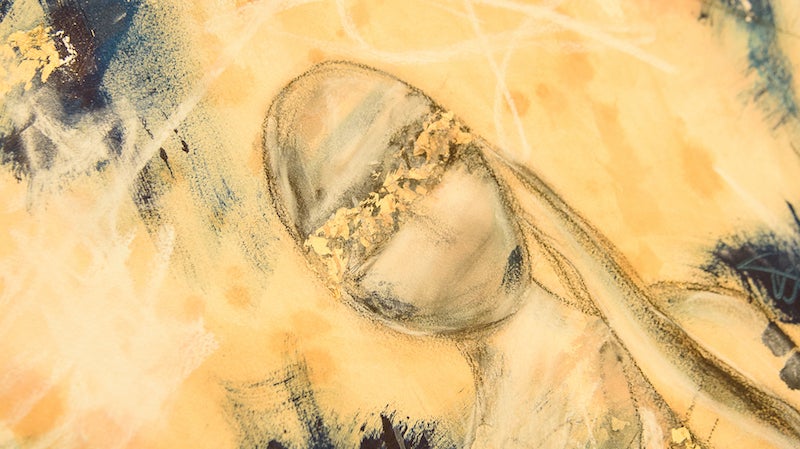
She enjoys looking into someone else’s life and creating a piece for them, even if it departs from her usual color palette. “I like to try new mediums and to challenge myself,” she says. “I’m drawn to the gold leaf and squares and linear lines, so I try to push myself.”
Though she never thought she would make art for other people—particularly as she finds an emotional release and peacefulness in art—she loves to learn someone’s style and colors and what they want in the piece. Sometimes, she’ll even hide words in the paintings, so small and blended with the art you can barely find them, to further demonstrate the feeling or essence of a piece.
Donna is inspired by what she learns about people, as well as by the art around her. “Beauty draws me in, but I love to feel it and touch it, to have that tactile experience. I’m drawn to that with some of the art I collect myself.”
Her collection, which started as a series of women alone in paintings, has turned into an eclectic medley of different kinds of art, bound together in the gallery walls around her home. “The art awakened something within me that just brought joy. “From creating it, people loving it and purchasing it, I would use those funds to purchase other people’s art.”
Painting also sparked a new level of creativity that Donna adds to her Hall-Kent classroom, though the creativity has always been present in drawings on her door and other class projects. She’s since guided her class to think about art like she does: as something that has the ability to express emotion in a much different way than words can.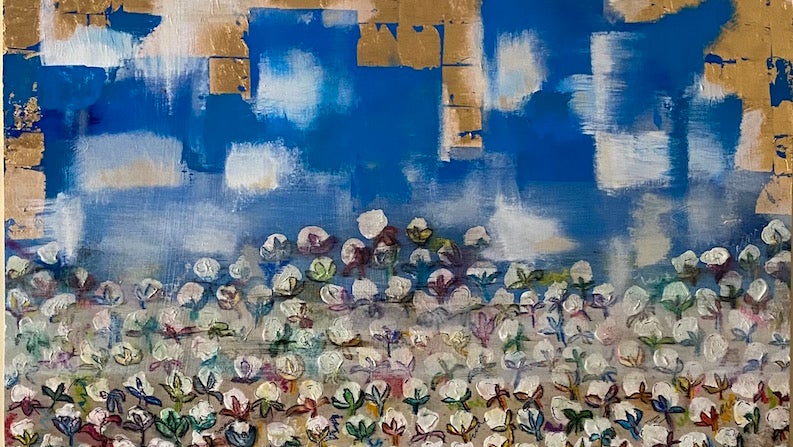
During Black History Month, the class studied Louis Armstrong to learn more about his roots in Louisiana (where Donna’s also from) and listen to his music. Then, they explored how the trumpet could connect with what they see and create.
Donna asked them, as they listened, to tell her what colors they heard. “They all giggled, and I could tell they were a little unsure,” she says. “I modeled and told them when I’m hearing yellow —then drawing squiggly lines—and then I’m hearing red. I told them, ‘I want you to close your eyes and listen to see what colors come into your head.’ And they took off.”
Her kindergarteners created rhythmic and abstract pieces, all while learning how sounds and feeling translates into color. “I want them to be confident that they can draw anything,” she says. Donna has watched them become great illustrators with no fear of drawing what they imagine or filling up blank space, alongside lessons from their art teacher at Hall-Kent, Brooklyn Scoggins.
At the end of the day, her students share her joy. Her time painting is separate from her time in the classroom, but her approach to the creative has added new beauty and peace to her life and the lives of others.
“Not everything is about emotion, but initially it was,” she says. “I am connected to the client and their desires and color palette and what they want to see, and that’s inspiring because I care about people. But left to my own devices, it is about emotion, and it’s about healing.
Follow Donna’s art on Instagram @donnafirnbergart.
Why You Should Paint
Donna has seen it in herself, her friends and her students: everyone has the potential to take on a creative outlet, and it’s never too late to explore what that might be. “There’s a little creative soul in everyone. We just need to keep it, no matter what it is,” she says.
Like the confidence she sees in her kindergarten class, Donna encourages people to not be afraid to make a mistake when first starting to paint or start another form of art. “It’s common to have self-doubt and feel exposed, but you can push through that. Think about what you want to express, and do it just for yourself,” she says. “We’d be a better world if everyone tried some art.”

